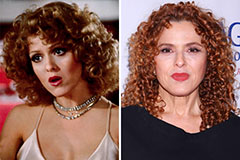Grasping DTF Printing: Advice for Getting Vibrant and Durable Prints
In the globe of fabric printing, achieving vivid and long lasting prints is a desired ability that can elevate the top quality of your output. From picking the best products to adjust print setups and improving post-printing finishing strategies, there are various aspects that can influence the end result of your prints.

DTF Printing Essentials
For those new to the globe of textile printing, comprehending the principles of DTF printing is important to mastering this ingenious strategy. Straight to Film (DTF) printing is a modern-day method that entails moving styles from an unique movie onto numerous textiles utilizing a warm press. Unlike standard techniques like screen printing, DTF uses advantages such as lively colors, elaborate detailing, and the ability to print on diverse materials like cotton, polyester, and blends.
The process starts by publishing the layout on an unique DTF movie using a suitable printer with CMYK or CMYKW ink collections. Once the style is published, it is then treated with a heat press to develop a durable and resilient print. DTF printing is recognized for its capacity to recreate complicated styles with high accuracy and shade precision, making it a preferred selection for companies wanting to produce custom garments, promotional items, and a lot more.
Choosing the Right Materials

The sticky powder acts as a bonding agent in between the published layout and the material, so it should have strong attachment buildings to make certain a lasting and resilient transfer. By carefully selecting the best products for DTF printing, printers can enhance the quality, vibrancy, and longevity of their prints.
Maximizing Print Setups
When intending to look at here now accomplish the finest results in DTF printing, meticulous attention to enhancing print setups is critical for making sure precise and high-quality transfers onto fabrics. One key aspect to consider when enhancing print setups is the resolution.
While boosting the speed can improve efficiency, it might endanger the last print's clarity and color saturation. Exploring with different rates and observing the results can help establish the optimal setting for each print task.
Moreover, adjust shade profiles and ensuring proper shade administration are essential for attaining precise and constant shades across various prints. By calibrating color setups and accounts, printers can lessen color variances and produce uniform outcomes, enhancing the overall print top quality and customer complete satisfaction.
Preparing Art Work for DTF Printing
Convert the artwork to CMYK color mode to make sure that the shades translate precisely from screen to print. Remember to mirror the final design prior to publishing to ensure that it transfers properly onto the garment. By adhering to these steps and paying close attention to the information, you can prepare art work that is optimized for resilient and vibrant DTF prints.
Post-Printing Finishing Techniques
Carrying out reliable post-printing completing methods is vital to improving the toughness and aesthetic charm of DTF prints on textiles. Once the printing procedure is full, using warmth to the printed layout is essential.
Once the film is removed, the print might need added healing time to further establish the ink right into the textile. This action helps improve the washability and toughness of the print, guaranteeing it can hold up against numerous wash cycles without fading visit this site or fracturing.
In addition, trimming any kind of excess movie around the style this content can provide the final print a tidy and specialist look. Putting in the time to correctly complete DTF prints post-printing can substantially affect the overall high quality and long life of the textile layout.

Verdict
In final thought, mastering DTF printing needs a comprehensive understanding of the fundamentals, picking ideal materials, maximizing print settings, preparing artwork efficiently, and making use of post-printing completing techniques. By following these techniques and tips, one can accomplish resilient and lively prints that meet their wanted top quality standards. Consistent method and focus to information are crucial in attaining effective end results in DTF printing.
From picking the best products to tweak print setups and improving post-printing ending up techniques, there are many variables that can affect the end result of your prints. Unlike standard techniques like display printing, DTF provides advantages such as dynamic shades, complex detailing, and the ability to publish on diverse materials like cotton, polyester, and blends.
Once the style is published, it is then treated with a warm press to produce a durable and durable print.When aiming to attain the ideal outcomes in DTF printing, careful focus to optimizing print settings is essential for making sure premium and accurate transfers onto fabrics.In conclusion, understanding DTF printing calls for an extensive understanding of the basics, picking suitable products, enhancing print setups, preparing artwork efficiently, and making use of post-printing ending up methods.
 Romeo Miller Then & Now!
Romeo Miller Then & Now! Marcus Jordan Then & Now!
Marcus Jordan Then & Now! Bernadette Peters Then & Now!
Bernadette Peters Then & Now! Dawn Wells Then & Now!
Dawn Wells Then & Now! McKayla Maroney Then & Now!
McKayla Maroney Then & Now!